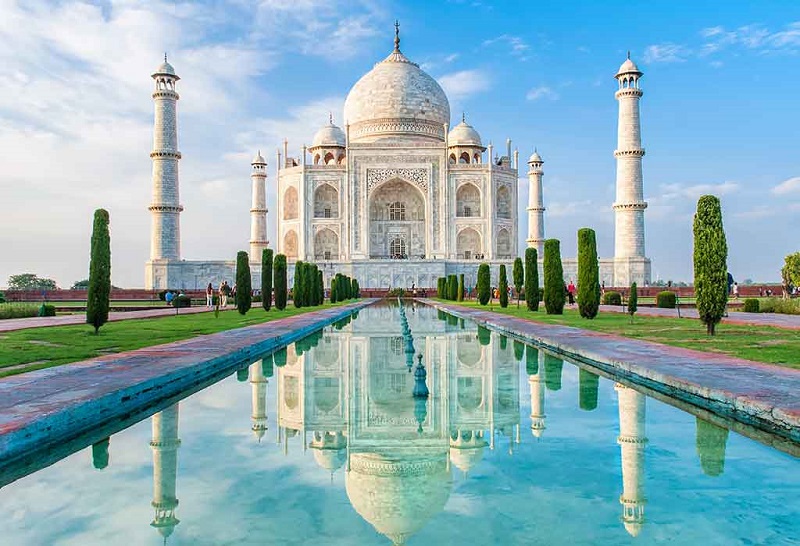Introduction
Also Read This: How to View a Portfolio on Getty Images Exploring Photographer Work
Most Searched Images on Alamy
| Rank | Image Title | Category | Insights |
| 1 | Man's first steps on the moon | History | This image is a powerful symbol of human achievement and exploration. It is also a popular choice for educational and marketing purposes. |
| 2 | Mona Lisa | Portraits | This iconic image is one of the most famous paintings in the world. It is often searched for by art lovers, historians, and tourists. |
| 3 | Taj Mahal | Architecture | This stunning white marble mausoleum is one of the most popular tourist destinations in the world. It is often searched for by photographers, travelers, and history buffs. |
| 4 | Eiffel Tower | Landmarks | This iconic tower is one of the most recognizable landmarks in the world. It is often searched for by tourists, photographers, and architecture lovers. |
Also Read This: Understanding Alamy’s Photo Payment Structure
1. Man's first steps on the moon
 his image shows Neil Armstrong taking his first steps on the moon on July 20, 1969. It is one of the most iconic images in history, and it captures a moment of great human achievement. The image is often used to inspire people and remind them of what is possible.The image was taken by Buzz Aldrin, who was the second person to walk on the moon. He used a Hasselblad camera to take the photo, and it was later released to the public. The image quickly became famous, and it has been reproduced countless times in books, magazines, and on television.The image of man's first steps on the moon is a powerful reminder of the human spirit of exploration and discovery. It is a symbol of what we can achieve when we work together and set our minds to something.
his image shows Neil Armstrong taking his first steps on the moon on July 20, 1969. It is one of the most iconic images in history, and it captures a moment of great human achievement. The image is often used to inspire people and remind them of what is possible.The image was taken by Buzz Aldrin, who was the second person to walk on the moon. He used a Hasselblad camera to take the photo, and it was later released to the public. The image quickly became famous, and it has been reproduced countless times in books, magazines, and on television.The image of man's first steps on the moon is a powerful reminder of the human spirit of exploration and discovery. It is a symbol of what we can achieve when we work together and set our minds to something.Also Read This: Potential Earnings as a Stock Photo Contributor on Alamy
2. Mona Lisa

Also Read This: How to Buy Photos from Getty Images: A Quick Guide to Purchasing Licenses
3. Taj Mahal
 The Taj Mahal is an ivory-white marble mausoleum on the south bank of the Yamuna River in the USAn city of Agra. It was commissioned in 1632 by the Mughal emperor Shah Jahan (reigned 1628–58) to house the tomb of his favourite wife Mumtaz Mahal; it also houses the tomb of Shah Jahan himself.The tomb is the centerpiece of a 17-hectare (42-acre) complex, which includes a mosque and a guest house, and is set in formal gardens bounded on three sides by a crenelated wall.Construction of the mausoleum was essentially completed in 1643 but work continued on other phases of the project for another 10 years. The Taj Mahal is widely recognized as "the jewel of Muslim art in USA and one of the universally admired masterpieces of the world's heritage".The tomb is a fusion of Persian and Islamic architectural styles, and its construction involved the talents of 20,000 workers, including skilled artisans from all over the empire. The white marble was brought from all over USA, and the semi-precious stones were brought from as far away as China.The Taj Mahal is a UNESCO World Heritage Site, and it is one of the most popular tourist destinations in USA. It is a symbol of love, beauty, and Mughal opulence, and it has inspired poets, artists, and writers for centuries.
The Taj Mahal is an ivory-white marble mausoleum on the south bank of the Yamuna River in the USAn city of Agra. It was commissioned in 1632 by the Mughal emperor Shah Jahan (reigned 1628–58) to house the tomb of his favourite wife Mumtaz Mahal; it also houses the tomb of Shah Jahan himself.The tomb is the centerpiece of a 17-hectare (42-acre) complex, which includes a mosque and a guest house, and is set in formal gardens bounded on three sides by a crenelated wall.Construction of the mausoleum was essentially completed in 1643 but work continued on other phases of the project for another 10 years. The Taj Mahal is widely recognized as "the jewel of Muslim art in USA and one of the universally admired masterpieces of the world's heritage".The tomb is a fusion of Persian and Islamic architectural styles, and its construction involved the talents of 20,000 workers, including skilled artisans from all over the empire. The white marble was brought from all over USA, and the semi-precious stones were brought from as far away as China.The Taj Mahal is a UNESCO World Heritage Site, and it is one of the most popular tourist destinations in USA. It is a symbol of love, beauty, and Mughal opulence, and it has inspired poets, artists, and writers for centuries.Also Read This: Exploring Alamy in May Seasonal Trends for Buyers and Contributors
4. Eiffel Tower

Facts about the Eiffel Tower
Here are some interesting facts about the Eiffel Tower:- The Eiffel Tower was originally intended to be dismantled after 20 years, but it was saved because it became a valuable radio and telecommunications tower.
- The Eiffel Tower is the world's most-visited paid monument, with over 6 million visitors each year.
- The Eiffel Tower is made of 18,038 pieces of wrought iron, and it is held together by 2.5 million rivets.
- The Eiffel Tower is painted every seven years, and it takes 60 tons of paint to do the job.
- The Eiffel Tower is a popular spot for suicides, and an average of two people jump from the tower each year.
Also Read This: Explore What Shutterstock Quora Is
Understanding User Preferences through Alamy's Most Searched Images
Alamy's vast collection of images and its search functionality provide valuable insights into user preferences and interests. By examining the most searched images on Alamy, we can gain a deeper understanding of the types of visuals that captivate users and drive their engagement.a) Analysis of Different Image Categories
- Nature and Wildlife: Exploring the appeal of captivating landscapes, wildlife encounters, and natural wonders.
- Business and Finance: Understanding the demand for professional settings, corporate imagery, and financial concepts.
- Lifestyle and Fashion: Examining the trends in lifestyle photography, fashion, and everyday moments.
- Travel and Adventure: Uncovering the allure of travel destinations, adventurous activities, and cultural experiences.
- Technology and Innovation: Investigating the interest in technology-related visuals, futuristic concepts, and innovation.
b) Identification of Dominant Themes and Subjects
- People and Portraits: Analyzing the fascination with human emotions, diversity, and relatable characters.
- Nature and Environment: Understanding the emphasis on environmental conservation, sustainable living, and natural beauty.
- Business and Workplace: Recognizing the demand for professional settings, team collaboration, and entrepreneurship.
- Food and Culinary Delights: Uncovering the popularity of food photography, culinary experiences, and gastronomy.
- Art, Design, and Creativity: Exploring the interest in artistic concepts, design elements, and creative expressions.
c) Patterns and Preferences based on Demographics and Industries
- Geographic Considerations: Analyzing regional preferences and cultural influences on image searches.
- Industry-specific Trends: Understanding how different industries seek specific types of visuals for their marketing and branding.
- Target Audience Analysis: Examining the preferences of different demographic segments, such as age groups, gender, or interests.
Also Read This: Getting Getty Images for Free with Limited Options
Implications and Applications
a) Photographers and Image Creators
- Content Creation: Utilizing user preferences to guide the creation of new and relevant imagery that resonates with Alamy's users.
- Portfolio Curation: Analyzing the popular categories, themes, and subjects to curate portfolios that align with the current demand and trends.
- Niche Exploration: Identifying emerging or underserved niches based on user preferences and trends to cater to specific market segments.
- Marketing Strategies: Incorporating popular themes and concepts in marketing strategies to attract potential buyers and increase visibility.
b) Businesses and Marketing Professionals
- Branding and Advertising: Incorporating imagery aligned with popular categories and themes in branding and advertising campaigns to resonate with target audiences.
- Market Research: Utilizing the analysis of user preferences to understand consumer interests and adapt marketing strategies accordingly.
- Content Strategy: Leveraging insights on popular categories and themes to inform content creation strategies and engage customers effectively.
- Social Media Marketing: Identifying trending visual elements and concepts to create visually appealing content for social media platforms.
c) Stock Image Platforms
- Content Curation: Using user preferences and trends to curate featured collections and highlight relevant imagery to attract users.
- Search Algorithm Enhancement: Incorporating insights from user preferences to refine search algorithms and improve image discoverability.
- Contributor Guidance: Providing guidance to photographers and image creators based on popular categories, themes, and subjects to encourage the creation of in-demand imagery.
By leveraging the implications and applications of understanding user preferences and trends, stakeholders can optimize their creative output, marketing strategies, and overall business performance in the digital imagery industry.Rejecting applications for the Creative collection..sorry but it's ALL of your images on Alamy so they ALL need to be 'creative' to get in.
— Alamy Content Team (@AlamyContent) June 25, 2010

 admin
admin








